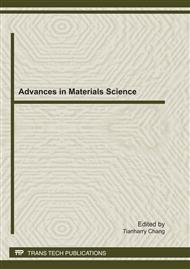p.105
p.109
p.115
p.120
p.124
p.130
p.134
p.139
p.143
Study on Thermal Assisted Direct Bonding of Glasses for Lab-on-Chip Application through Surface Activation Process
Abstract:
Surface treatment before glass bonding is an important and critical issue for glass-based lab-on-chip fabrication. In the present article we verified five different activation methods for obtaining sound thermal assisted direct bonding (TADB) on glasses. Glass surface has been investigated by means of water contact angle, X-ray photoelectron spectroscopy (XPS). The optimum surface activation method for TADB on glasses was found to be H2SO4:H2O2 (3:1 by volume) followed by HNO3. By using the TADB optimized activation method, the glass bonding strength higher than 32MPa was obtained with a glass the roughness of 50 nm.
Info:
Periodical:
Pages:
124-129
Citation:
Online since:
September 2011
Authors:
Price:
Сopyright:
© 2011 Trans Tech Publications Ltd. All Rights Reserved
Share:
Citation:


